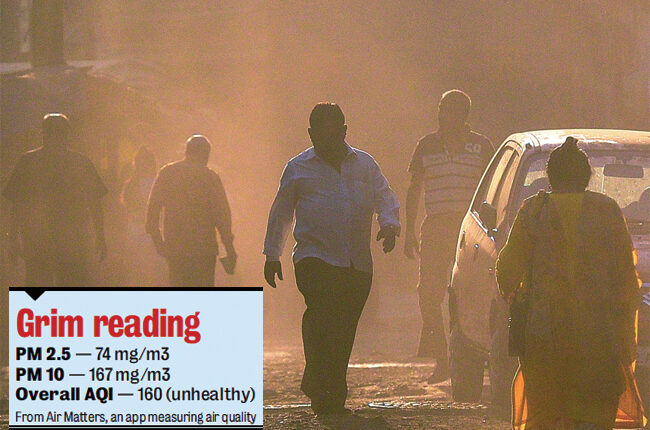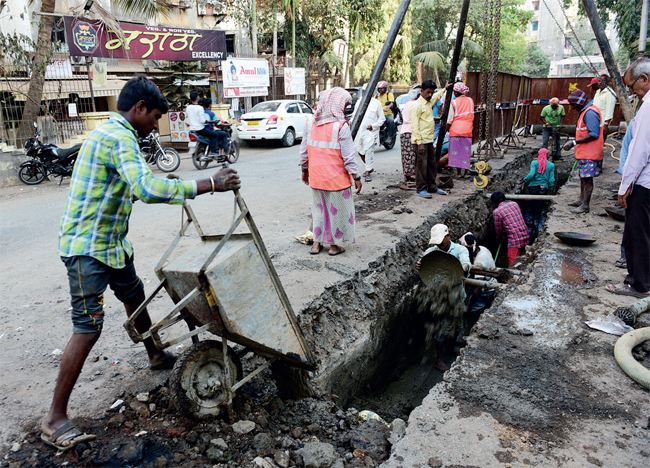
Choking dust, bumpy and dug up roads, broken drainage lines, shoddy infrastructure – for Mumbaikars, this is the daily-lived reality. But in one particular area, the situation seems even grimmer, with potential health ramifications. The massive work undertaken by BMC of installing drainage pipelines throughout Pratiksha Nagar, in Sion, has become a source of misery for residents of the area, who claim the project has made their lives a living hell.
Every road from Sion station to Pratiksha Nagar has been dug up and left open. People are facing health issues, school buses and waste collection trucks find it difficult to pass through the by-lanes, and market areas are so full of dust that the simple act of venturing out becomes a problem.
Swati Deodhar, who has been living in the area for eight years, has developed skin allergy. “We have to wipe everything down twice. Every day,” she says.
“I had to get treatment for skin allergy. It’s also suffocating. Often people here develop throat infection. But the work does not seem to be getting over. Politicians continue to make promises, but nothing ever gets done.”
Pratiksha Nagar, one of the oldest localities in Mumbai, has most of the MHADA housing and a large number of transit camps. When it was first developed, plans for basic amenities such as roads, drainage pipes and markets were not included. Over the years, as the population increased, the situation became critical.
“We are ready to face inconvenience if some facilities are being built. But there needs to be some planning,” says advocate H R Chavan, who lives in the judges’ colony.
“While repairing the drainage pipeline in our area, some other pipeline was damaged, which the contractor refused to repair. This added to our woes. We are not against the work but it should be completed in a planned manner.”
It’s not just the residents facing problems; shopkeepers and vendors too find it difficult to do business. “I have covered my shop with plastic as dust particles spoil the wares,” Vikram Singh, who runs a stationery shop, says.
A vegetable vendor who does not want to be quoted says he has lost many customers. “People don’t want to buy vegetables coated in fine dust,” he says.
“We too are directly exposed. Sometimes drainage water is thrown on the road during repair works, which makes the situation very bad.”
Shiv Sena corporator from Pratiksha Nagar, Ramdas Kamble, who was elected in a by-poll seven months ago, says the work will take one more year to complete. “The deadline for the road is March 2020. At present, drainage pipelines are being installed. Since the land here was reclaimed, we are using geo grid technology to make the roads,” Kamble says.

Pratiksha Nagar is one of the last areas in the island city to be developed for housing. It was built in the 1970s on reclaimed land. On one side of it are Sion Koliwada and Guru Tegh Bahadar Nagar Station on the Harbour Line. The other side opens to a recently developed road connecting Chunabhatti highway and the Eastern Express Highway.
MHADA constructed about 100 buildings as transit camps in the area and then about 60 to 70 buildings for general housing. Judges and journalists are among those who live there.
source: Mumbai Mirror
